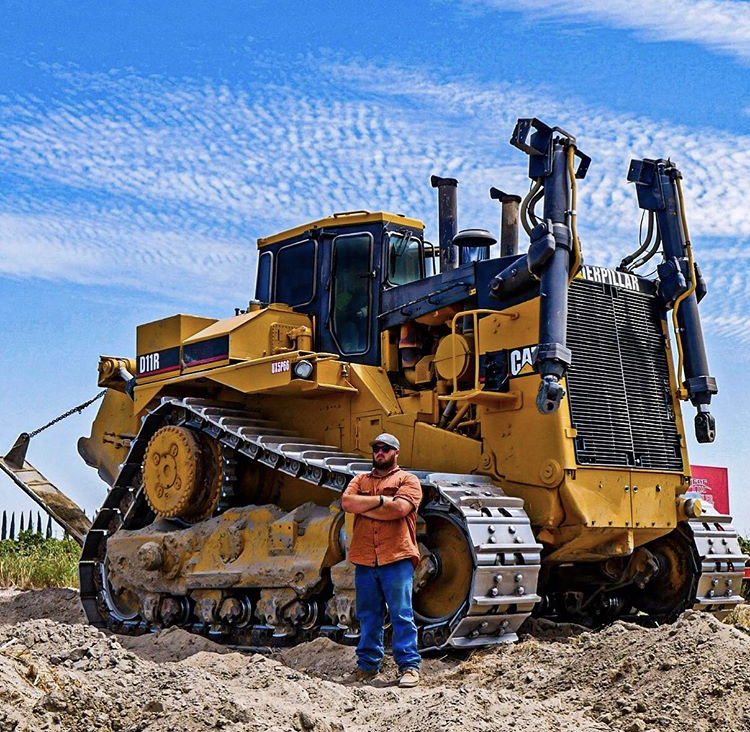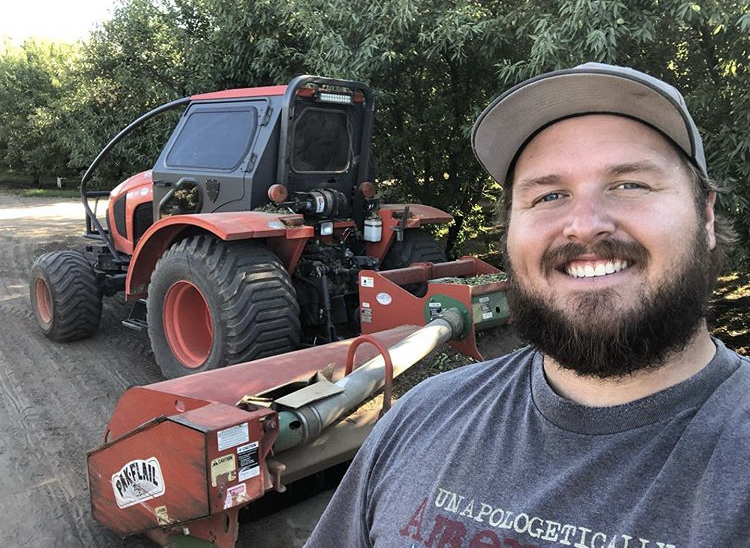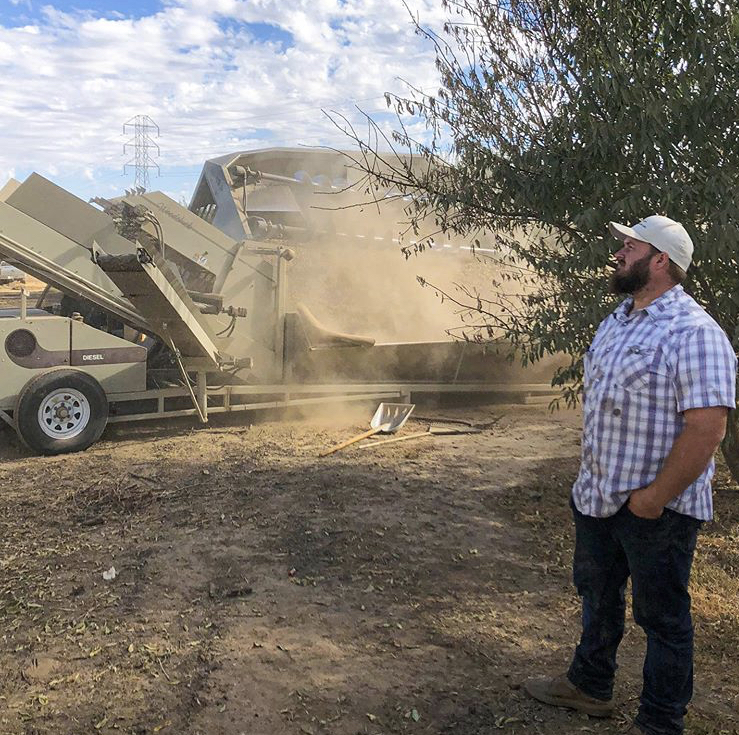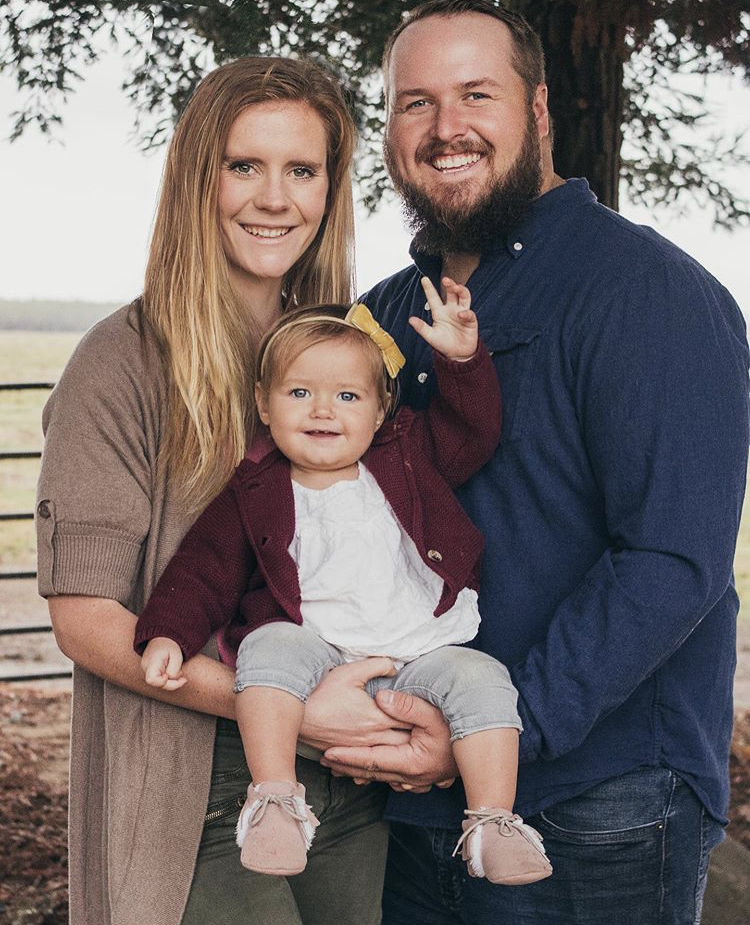
In 1933, Valk Ranch was established in Oakdale, California at a time well before Instagram or YouTube and definitely before smartphones. Generations later, Ryan Valk is using social media daily to not only improve his farming practices, but in his new role as an agriculture advocate. Like many of today’s new age farmers, Ryan is using social media and his phone not only to help him farm and operate his business more effectively and efficiently, but to help share his farming story.
You might know Ryan better as @CaliforniaFarmer, his handle on Instagram and YouTube. You might even be a YouTube subscriber to his channel or viewer of his daily Instagram stories. Maybe you even attended a recent Blue Diamond grower meeting or Stanislaus County Farm Bureau meeting where he was sharing his success in telling his farming story. Ryan developed his Instagram and YouTube platforms as a way for him to interact with farmers and consumers alike. He has grown his platforms to now more than 6,000 Instagram followers and 4,000 YouTube subscribers in less than two years.

When asked how he was able to be so successful, Ryan credits other farmers. “I started following other Instagram farmers. I saw the funny, light-hearted, and goofy side of farming they brought to social media. I started tagging other farmers and tried to start conversations with them using Instagram stories. They helped me grow my following,” he says.
Just by having daily conversations on Instagram stories with other farmers, Ryan was soon creating bonds and brother-like relationships with farmers across the nation and the globe.
“I started a daily conversation with an Oregon farmer and an Australia farmer, and now we talk back and forth via Instagram stories and tag each other daily. It really helped to gain followers through their interactions and making farming more fun and light-hearted. Soon their followers started following me, and I was able to grow my followers with an international audience as well as a non-farming audience.”
There has been quite a learning curve he adds, including “what hashtags to use, don’t use, what words or terms are hot buttons right now. It has taken research and a lot of searching through other accounts to see what they use and what works for them.”
Ryan says the use of hashtags has helped him bridge the gap in conversations he may not otherwise have been a part of. “Using the word sustainable with a hashtag when talking about prunings and grinding them up, is not what others would imagine when searching #sustainable.”
He says it has been a mostly welcoming experience diving into social media advocacy. “There are a lot of negative comments on YouTube when I posted a video on deep ripping. But, sadly, 75 percent of those negative comments are from other farmers. Sometimes we can be our own worst critics when it comes to farmers on social media.”
For the most part, he said, on Instagram, he finds more farmers are intrigued and wanting to learn how and why he does certain farming practices the way he does. And as a new grower to almonds, he values the opinions of other farmers who genuinely offer advice. Ryan and his father consider themselves both first-generation almond farmers.

The family has been farming in Oakdale since 1933, but back then, the farm looked much different, and not just from a social media perspective. Ryan’s great-great-grandfather and great-grandfather were sheep and cattle ranchers with occasional feed crops in rotation. In 1989, Valk Ranch diversified the cattle business and added turkey production to the family farm. In 2005, it sold off the turkeys and has had chickens ever since. Ryan says the birds provided an easy transition, but he wanted to find the fit that matched his passions for California and farming. It wasn’t until one of his Soil Science professors at Modesto Junior College started talking about California’s ideal and unique conditions for almonds that he even thought about permanent crops. While on a church mission trip in Idaho, Ryan and his father decided that they would give almonds a try. Seven years later, he sees more almonds, and perhaps fewer chickens, in his future.
Ryan manages the family’s almond orchards now, and he values the help other social media farmers have provided to him. He has learned new and innovative farming practices to incorporate into their farm from the friendly conversations of others on social media. In fact, he credits social media in part to the farm’s success. “I have met so many other farmers that have offered advice and even people who do custom labor and whatnot.”
As for the future of @CaliforniaFarmer, he says, “my name alone has me thinking. My handle has almost given me an expectation that I need to help share more about California agriculture and not just our farm.” Ryan has plans to share other farms and commodities on his YouTube channel to show the diversity of California agriculture. He explained how he wanted to show more about the hundreds of different commodities that are farmed in California and how the uniqueness of California agriculture.
Ryan enjoys advocating for agriculture and his new role as a social media advocate. He wants to get better at sharing with consumers, noting farmers often find themselves talking to their own tribes, and it can be hard to break open that barrier to speak outside of the agriculture community.

“One of my goals is to really focus on consumer outreach and beyond,” he says. “Social media is helping to tell our story, and we need to get more farmers doing it. If we get more voices out there, there will be more farmers for consumers to see.”
Ryan’s advice to other farmers is simple: “Get more involved in social media, period. Get your story out there. As long as we speak up and share our story, we aren’t going to get steamrolled by other policies, or whatever it may be that is impacting our farm. We are the minority as farmers, so we need to speak up so others can see the good we are doing.”










